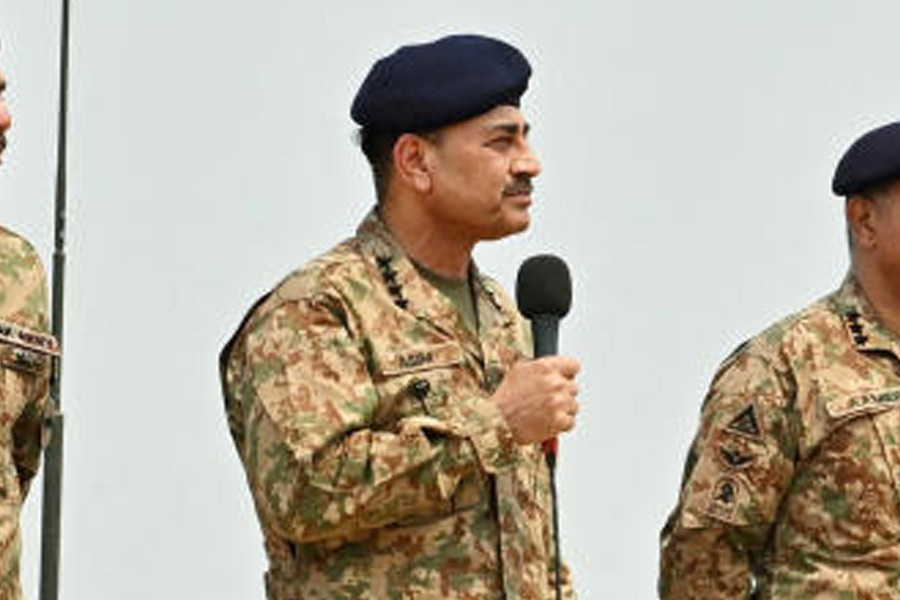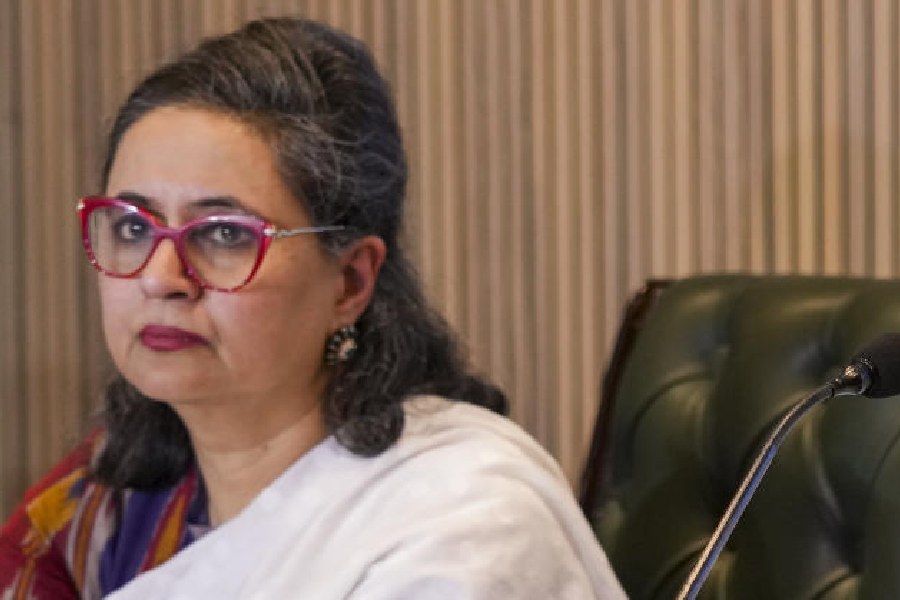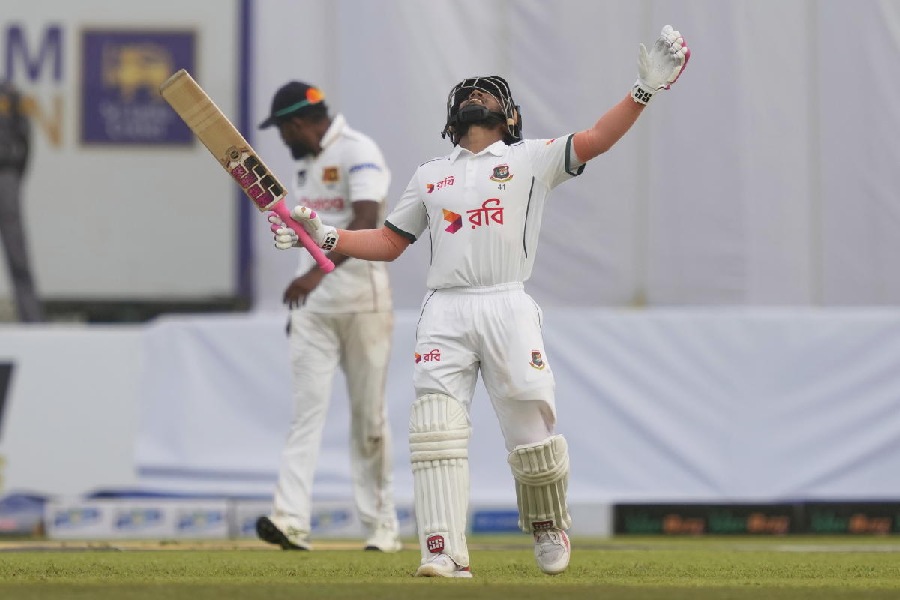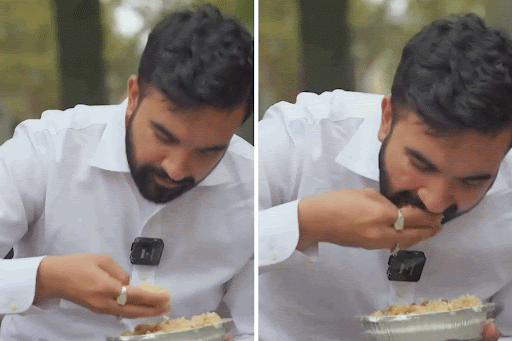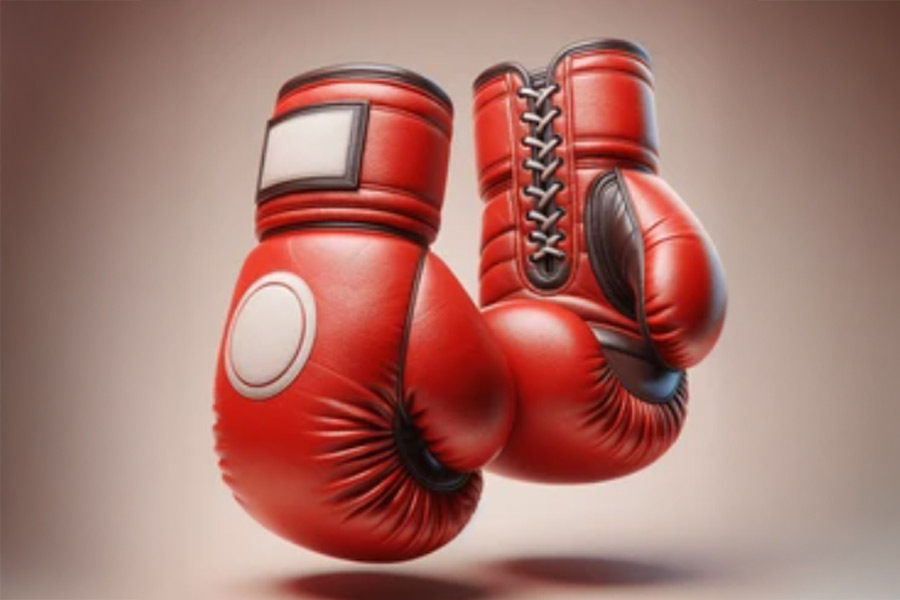|
|
| Annual display at the faculty of fine arts, M.S. University |
Vadodara made me feel tranquil the moment I landed there. The little airport had a distinctive, Islamic-looking terminal building with white domes. Outside, the streets lay stark and clean in the afternoon sun. There were giant neem trees on both sides, in whose trembling shade cows ruminated timelessly. The first thing I noticed were the many women, young and not-so-young, single and in pairs, riding their two-wheelers in white, elbow-high gloves. The writing everywhere — signboards, notices, name-plates — was in Gujarati. The autos, I discovered, all ran on CNG and strictly to the meter.
The sense of orderliness and safety disconcerted me. This was my first trip to Gujarat. Over the last five years, the names of its districts and cities, together with their housing societies, bazaars and bakeries, had become points in a very different kind of mental map. They stood for organized menace rather than safety. I had reached on May 15. Not even a week had passed since Chandra Mohan’s arrest on the premises of the fine arts faculty of Vadodara’s M.S. University. This MA finalist — a carpenter’s son from Andhra Pradesh — had put the other carpenter’s son naked on the Cross, and placed a commode in front of him. He had also put up huge and startling representations of a few Hindu gods. This wasn’t a public exhibition, but his finals display, to be judged by examiners.
On May 9, Neeraj Jain, a local BJP man, stormed into the faculty with his men and some reporters from the vernacular press, abused everybody at the display (which he deemed obscene and “anti-Gujarat”), roughed up Chandra Mohan, and then got the police to arrest him. All this, without once informing the university authorities. The offending artefacts were taken down and sealed by the police, but the vice-chancellor refused to lodge an FIR against Jain. A couple of days later, with Chandra Mohan still in jail, the students put up, in the fine arts faculty porch, a comprehensive exhibition from their departmental archives on the erotic traditions — particularly the use of nudity — in Indian as well as Western religious and secular art. They wanted to make the point that the taboos broken by Chandra Mohan were, by no means, artistic or even religious ones, in any ‘traditional Indian’ sense. The deputy registrar and the pro-VC ordered the exhibition to be closed down, again on grounds of obscenity. When the fine-arts acting dean, faculty member and art historian, Shivaji Panikkar, refused to do so, he was suspended and the Regional Documentation Centre sealed. This was all aggressively overseen by the BJP and VHP men, and the local Gujarati papers were on their side.
When I arrived, the protests in support of the artist and his teacher had spread all over the country and, through the internet, to many other parts of the world. But in Vadodara, I quickly began to sense a strange, deathly hush. Chandra Mohan had been released on bail, although no FIR had yet been filed by the university. An inquiry committee had been formed that included nobody from the fine arts faculty or community. Both Panikkar and Chandra Mohan had gone underground, fearing for their lives. Some of their friends were talking to me from undisclosed locations. The vacations had begun, and students had started going home, many of them uncertain about what would become of their final evaluations, some of them lingering out of a bewildered sense of solidarity.
Yet, this sense of an eerie lull gave way to quite another sense of anxious, energetic and concerted activity as I began to piece together the human networks that constitute this remarkably cosmopolitan ‘small town’. All the senior, local artists I talked to — most of them M.S. University alumni and not Gujarati — told me that they hadn’t been able to work at all over the past week. What they were feeling was an incapacitating mix of outrage, sadness and fear. Everybody was constantly and feverishly in touch with everybody else; every little development was instantly being circulated. Those who were close to Panikkar and Chandra Mohan had reached that stage of hectic exhaustion in which the normal rhythms of everyday life were suspended and it was impossible to talk about anything else. Strategies were being continually thought up and coordinated — for keeping the pressure up on the university authorities (now unabashedly partisan in refusing to protect their own students and faculty), for dealing with the press, the UGC, the state and Central ministries. All this activity, I realized, had nothing, and everything, to do with Art.
On my first evening, the young student I was talking to suddenly thought of taking me to K.G. Subramanyan’s house. She suggested this with an easy impulsiveness that is possible only in university towns like Vadodara and Santiniketan, where artists, teachers and students form close relationships that ignore institutional hierarchies. This student — who, like many others I spoke to, did not wish to be named — explained to me how the authorities and even students from the other faculties see such informal interactions as part of the dubiously unconventional ways of the “arts” people.
While walking with her towards Subramanyan’s house, a gentle breeze easing out the day’s heat, it struck me just how much my perception of the city was formed by the paintings of its other great artist, Bhupen Khakhar, who died in 2003. Bhupen’s art, together with his stories and plays in Gujarati, had unfailingly captured the sly eroticism of a middle-class town, its rooted householders sitting in their boxes of light with caressing eyes, performing strange, mundane rituals. But now, walking through the real Vadodara, I dimly began to sense the connections between the mystical kindliness of Bhupen’s vision and that other map of Gujarat, sinister and menacing, that had begun to form in our minds after 2002. What, I wondered, would Neeraj Jain, or indeed this entire tranquil neighbourhood, make of the two visibly aroused, elderly men in Bhupen’s Jajati, whose embrace clears out a vast, luminous and open space in the very heart of the city?
Subramanyan also talked to me about the difficult balance between openness and protection that must be constantly thought through and adjusted when something as idiosyncratic as Art is brought within the institutional structures of a university. Art education has to allow for not only creative and intellectual freedom, but also for unpredictable forms of dissent in the young people who come to it from a variety of backgrounds. In the fine arts, the teachers are, most often, artists as well, making their relationship with the institutional necessarily problematic. Hence, ‘protection’ has to be understood and implemented in diverse and complex ways, and senior administrators — VCs, pro-VCs, deans, registrars — must be intellectually and humanistically up to such a challenge. Students and teachers will thus have to be protected from sensitivities and sensibilities within a space in which the mature as well as the immature can feel both secure and inspired.
Open communication and collaboration across disciplines, especially between the arts and the sciences, and among students, faculty and administrators, remained important ways of preventing the isolation of the arts. Yet, a certain amount of what Subramanyan called “privacy” should also be ensured for them within the confines of the university, in the same way that new scientific research is often protected from untimely public disclosure. That too is an important aspect of the protective role of the university — a role that must be ever on guard against becoming a form of controlling paternalism, which again would be inimical to the special nature of the creative and critical arts.
But it was only after I actually went to the fine arts faculty the next day that I realized why Subramanyan had steered our talk away from fuming against the Hindu Right to a more nuanced understanding of institutional ‘protection’, its necessity and its pitfalls, in the context of Art. Abha Sheth, PhD scholar and lecturer, pillioned me into the faculty on her scooter, past the armed guards, and parked close to a sign which said, “PUBLIC EXHIBITIONS AND DISPLAYS NOT ALLOWED: BY ORDER”. Yet, in spite of these disagreeable presences, the place instantly made me feel what I always feel when I enter the Kala Bhavan courtyard in Santiniketan. It’s a sense that this space is beautiful and alive, neither a classroom, nor an art gallery, but more like a cross between open-air theatre and fairground. The halls and the courtyard, with its tree-shaded pool and its greens gone quite wild, are strewn with all kinds of artwork, the walls, floors and surfaces randomly, eccentrically, yet lovingly decorated. Everywhere there were students dismantling their work for the annual display.
For a while, because of what installation art looks like nowadays, I couldn’t make out whether they were putting together their works or taking them apart. And as I walked about, my initial feelings of lightness and freedom changed into a peculiar, haunting dismay as three things struck me about the students working away intently all around me: how terribly young they all were, how hard they worked and how passionately, and how utterly fragile their artworks were physically. How important and difficult, yet also how exhilarating, it must be, I thought, to create and sustain a space for them where they might learn, and live out, the perpetual interplay of freedom and discipline that constitutes original creativity of any worth, where they might begin to experience the errors, risks and rigours of their art, as well as its especial rewards, without feeling constrained or afraid.
Out in the courtyard, one student had covered the entire ground beside the pool with delicate yellow and white wind-vanes made of paper and sticks. They were all spinning madly in the breeze, looking like a field of crazy flowers. On the other side of this bank of wind-vanes, was a lone sculpture placed in the shade of a huge, old tree. It was a seated female nude realistically done, looking oddly forlorn amidst this wonderfully pointless activity. And when I think of what is at stake when the ‘autonomy’ of such spaces is so violently compromised, the image of that naked woman amidst those vanes spinning in the hot wind of summer comes back to me.
In March 2004, only a couple of years after the Gujarat genocide, the faculty of fine arts had organized an UGC national seminar, which was called “The Issues of Activism: The Artist and the Historian”. The brochure for this event puts together a mosaic of quotations and images about the myriad ways in which the practice of Art might be radicalized. Going through this document in the light of what is happening now, I find myself pondering, with a particular sense of irony, the excerpt from Rustom Bharucha’s Cultural Acitivism: Axioms in Search of Innovation (directly below which is reproduced Bhupen Khakhar’s marvellous painting of a bespectacled Indian pundit in drag, titled Sakhibhav): “Indian activists are too straight. Often, they are also self-righteous, politically correct, lacking in imagination and humour. They don’t risk the creation of new modes of cultural activism. But it is time to think about new strategies to get messages across…It is time to develop a lightness of being.”



